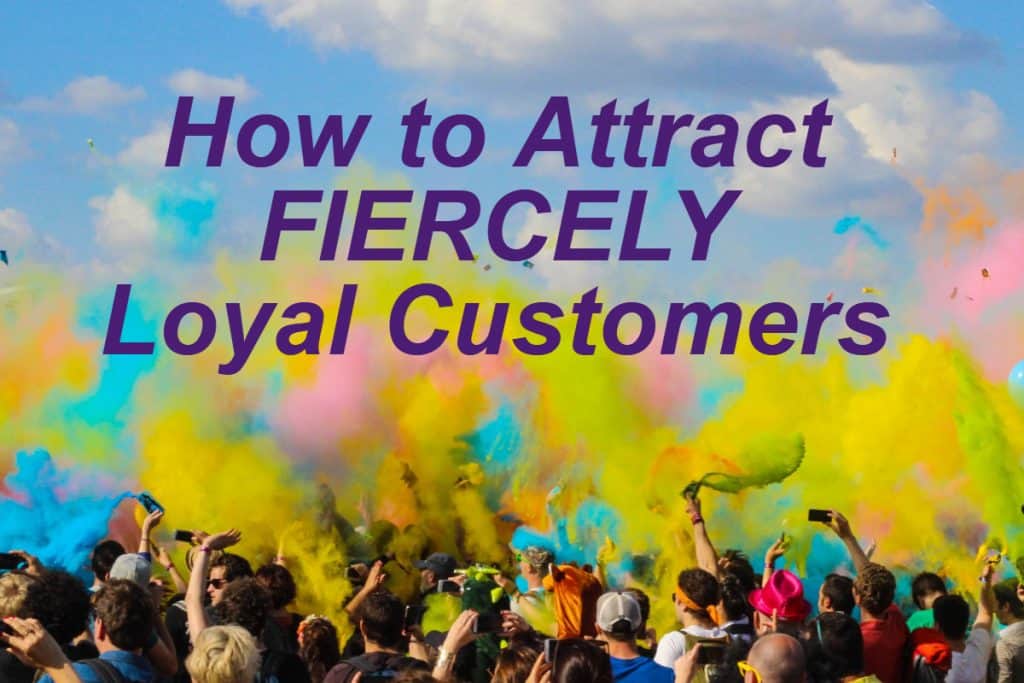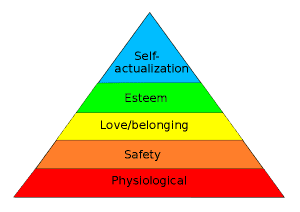
The right images and sensory details have the power to inspire fierce customer loyalty. Photos of red barns, babies and puppies are almost always good for a Facebook Like, but are they helping you achieve your business goals?
Certain types of images, colors, sounds, and activities can evoke specific feelings, which tap into customers’ motivations, which can lead to customer loyalty. The key is to understand which tactics are likely to create the desired impact.
Here are some tips to keep in mind when you’re creating your Instagram feed, a Facebook ad, a logo, or any other marketing materials.
Attracting loyal customers
Most independent small businesses can’t compete with the big guys on price. Attracting fiercely loyal customers is key to your success as a small business. Your most loyal customers will go out of their way to buy from you, engage with you online, and give you rave reviews.
These customers are attracted to more than your products or services; they feel connected with your values and your brand. Something about what you do or how you do it is tapping into their inner motivations. Connecting with your brand helps fulfill their aspirations or affirm their identity.
Of course, not everyone who buys from you will become brand-loyal. There must be an affinity between what they need and what you offer. And you must be able to fulfill their expectations every time.
People don’t buy products, they buy feelings
 Loneliness and insecurity make us feel bad. When we see people in this photo having fun, we subconsciously believe that if we buy an iPhone, we’ll attract friends, too.
Loneliness and insecurity make us feel bad. When we see people in this photo having fun, we subconsciously believe that if we buy an iPhone, we’ll attract friends, too.
Human beings like to think we’re rational creatures, ruled by that great big brain of ours. But when it comes to most purchasing decisions, people don’t buy products or services, they buy feelings.
Making even small decisions takes up a lot of our brain’s processing time. If every purchase involved a detailed decision-making process, we’d never get anything done. Therefore, we make most of our decisions through our hearts, not our brains.
Although most people claim that they compare brands and prices when they choose what to buy, “95% of our purchasing decisions are driven by unconscious urges, particularly our emotions,” according to Harvard Business School professor emeritus, Gerald Zaltman.
Thus, images that trigger the right emotions have a huge impact on what products or services we buy, which social media pages we follow, and which brands we’re loyal to.
Tapping into emotional motivators

Psychologist Abraham Maslow suggested that there is a hierarchy of human needs. Our physical needs for survival—food, water, warmth, rest—are at the bottom and our most sophisticated needs—self-esteem, self-actualization, and transcendence—sit at the top.
Today, most psychologists believe that humans can be simultaneously motivated by physical and intangible needs. We’re on a continual quest to satisfy both. Thus, we may eat any food to appease our hunger, but choosing certain foods may also satisfy a deeper need, such as the desire for belonging or self-expression.
By tapping into your customers’ emotional motivators, you can associate your brand or product with feelings and experiences that generate brand loyalty. For example, I shop at farmers markets because I think local foods are healthier and more nutritious. But subconsciously, I also seek out markets because I love being around farms and nature. When I go to Copley Market, I always stop by the Siena Farms stall because their bright logo and sumptuous sunflowers make me feel like I’m inhaling sunshine and country air in the middle of the city.

Responding to your customers’ motivations
Harvard researchers have identified some 300 different emotional motivators! Businesses that understand what motivates their customers and are able to provide products and experiences that help customers fulfill those emotional needs have a better chance of achieving their business goals.
Alan Dorfas and Daniel Leemon recommend how to respond to the most common motivators in their article, The New Science of Customer Emotions. The chart below summarizes their suggestions.

Identifying what motivates your customers requires a deep understanding of what makes them tick. There are many DIY market research techniques you can use to find out, such as doing one-on-one interviews, creating an online survey, running focus groups, or even just observing customer behavior.
Keep in mind that there may be a gap between what the customer says they want and their true motivators. Many people aspire to recycle, but don’t actually follow through. And we’re often driven by competing motivations. For example, people often say they want to eat healthy, but buy fries or chips to go with their plant-based burgers.
What if you cater to more than one type of customers? Hopefully, they share some common motivations. For example, Good Egg Marketing serves a diverse range of food and non-food-related clients, including Baby Boomers and Millennials, people of different races and ethnicities, rural folks who can barely get wi-fi and always-on urbanites. But as independent local business owners, they’re all determined to succeed, passionate about serving their communities, and wearing way too many hats. Those are the motivators I try to tie into when I’m creating my marketing materials.
No single image or message, however, is going to trigger the right emotional response from all of your customers. The 80/20 rule applies here. When in doubt, focus on the 20% of your customers who are generating 80% of your income and make sure you understand what motivates them.
Balancing Head and Heart
 While images are the primary stimulant for purchasing decisions, your text, product claims, prices, and other tangibles do matter. You have to balance the head and heart.
While images are the primary stimulant for purchasing decisions, your text, product claims, prices, and other tangibles do matter. You have to balance the head and heart.
Stonyfield does a good job finding that balance. The Yobaby yogurt container (see photo) states many benefits—such as USDA certified organic, Non-GMO Certified, #1 Pediatrician recommended–to convince you that it’s a healthy, safe product.
 But their ideal customer—health- and environmentally-conscious parents—is likely to be drawn to that adorable image of the happy, healthy baby. Obviously, if they feed their baby this yogurt, they’ll be a good parent.
But their ideal customer—health- and environmentally-conscious parents—is likely to be drawn to that adorable image of the happy, healthy baby. Obviously, if they feed their baby this yogurt, they’ll be a good parent.
Does using emotions make you a scary bad guy?
 Marketing often gets a bad rap, because it can be used to create false needs, stimulate over-consumption, and make people feel less than. But using emotions to attract someone to your brand is a technique that can be used for good or evil, depending how it’s done.
Marketing often gets a bad rap, because it can be used to create false needs, stimulate over-consumption, and make people feel less than. But using emotions to attract someone to your brand is a technique that can be used for good or evil, depending how it’s done.
Businesses can only create fierce customer loyalty if they create lasting bonds that deepen over time. If you’ve manipulated someone into buying something that only makes them feel good for a few seconds, you’re less likely to be able to create a lifetime customer.
Emotions are a powerful tool of persuasion, but they must be used ethically. Helping someone feel nostalgic for their childhood for a few seconds is NOT an excuse for selling a crappy product! But when you provide someone with a useful product or service they truly want AND you’re also helping them feel a genuine sense of belong, you’re adding value for that person. And that’s a good thing.
How to implement this strategy
Even if you don’t have an advertising budget, you can use any or all of your marketing vehicles—website, social media, videos, displays, signage, events, experiences, personal sales, print, and more—to connect your business with your customers’ emotional needs using this process:
- Identify the top emotional motivators that your products, services, or brand satisfy for your target customers.
- Before you create any marketing tactics or content (both words AND images), specify the feelings you want to arouse and the emotional needs you hope to reinforce through the ad, post, or experience.
- Choose or create images and text that fulfills that customer motivation.
- Ask someone in your target audience what comes to mind when they look at your draft. Does it do what you want it to do?
- Keep adjusting as needed.
Examples
The slide show below illustrates a few of the tools and tactics that marketers use to create desired feelings about their brands. As you view the slide show, take note of the emotions or reactions that each image arouses. Would any of these techniques be effective at attracting loyal customers to your business?










